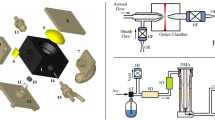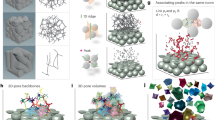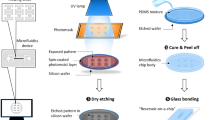Abstract
MILLSl recently described an apparatus for determining the mean diameter of the particles of a powder. This method, based on the measurement of the capillary pull of the interstitial pores, is not applicable in the case of very fine particles, since h, the capillary pull, cannot exceed the barometric height and l, the length of the column of the powder, must be kept as short as possible. The present communication describes in brief an alternative method (based on permeability principles) which is free from this limitation. The apparatus is illustrated in Fig. 1.
This is a preview of subscription content, access via your institution
Access options
Subscribe to this journal
Receive 51 print issues and online access
$199.00 per year
only $3.90 per issue
Buy this article
- Purchase on SpringerLink
- Instant access to full article PDF
Prices may be subject to local taxes which are calculated during checkout
Similar content being viewed by others
References
Mills, G. L., Nature, 161, 313 (1948).
Sullivan, R. R., and Hertell, K. L., “Adv. Colloid Science”, 1, 37 (Interscience Publishers, Inc., New York, 1942).
Author information
Authors and Affiliations
Rights and permissions
About this article
Cite this article
LAKHANPAL, M., ANAND, V. & PURI, B. A Method of determining Particle Size of Powders. Nature 176, 692 (1955). https://doi.org/10.1038/176692a0
Issue date:
DOI: https://doi.org/10.1038/176692a0



